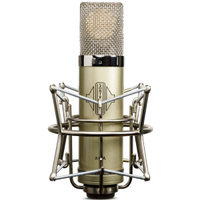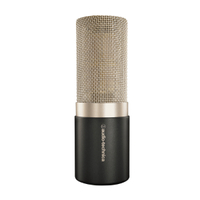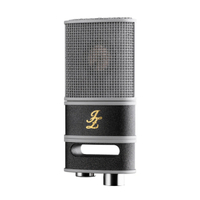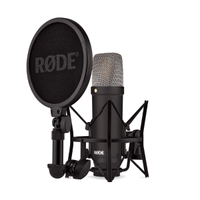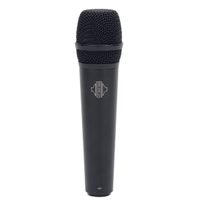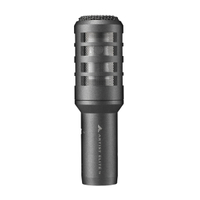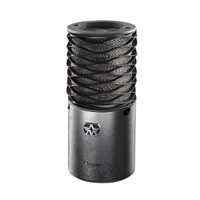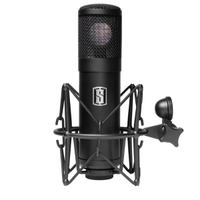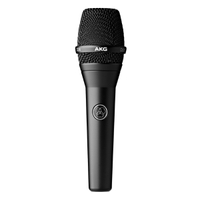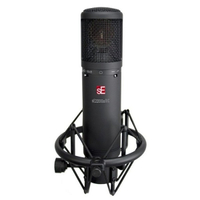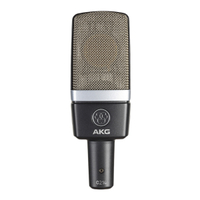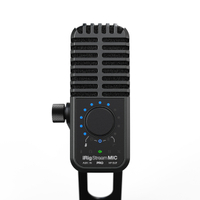Best microphones for recording 2025: My top studio mics for instruments, vocals and more
These are the best recording microphones from the biggest brands including AKG, Rode, Audio Technica, Neumann and more
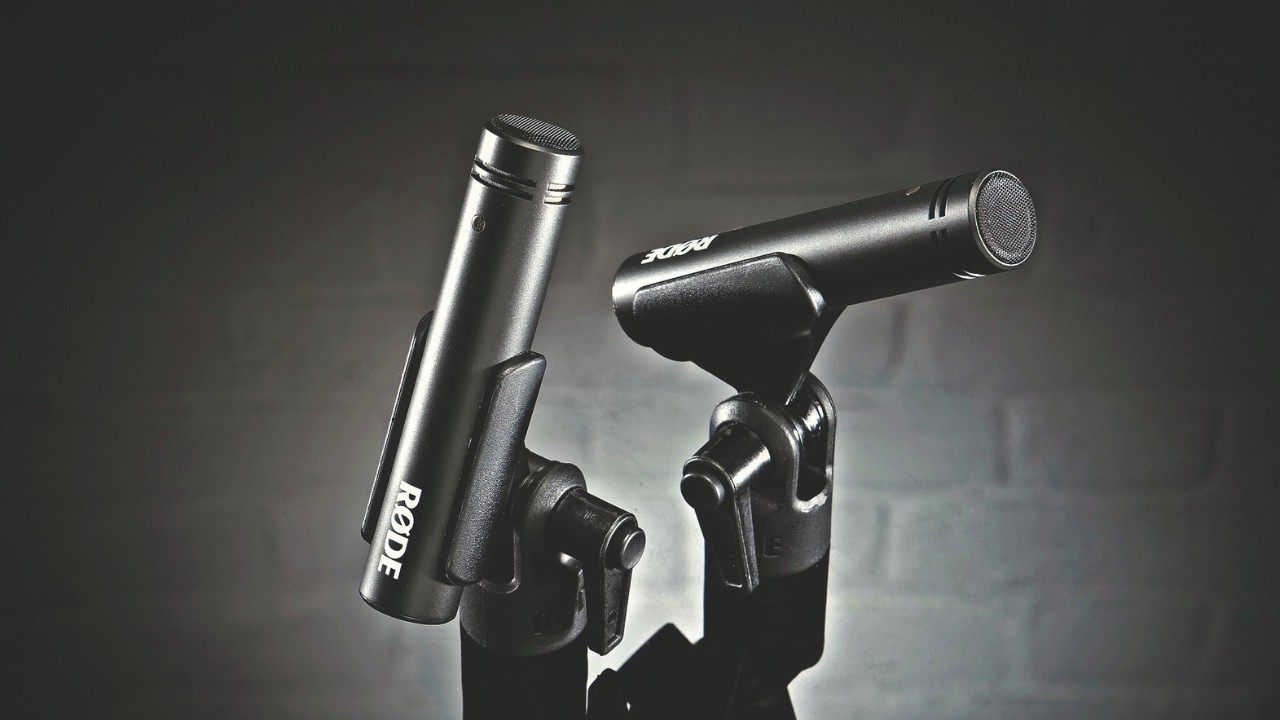
Trying to narrow down the best microphones for recording is a huge task. There are so many great microphones out there that I honestly struggled to single out a reasonable number of good microphones for recording. I've identified everything from cheap dynamic mics to pricey condensers, all of which will help you with a variety of recording needs.
My top picks consist of 9 microphones that will have you covered for the vast majority of recording tasks, and between myself and the MusicRadar team, we've tested every single one either through our reviews process, or in my case, using them in my studies at Spirit Studios. My choices for each category are backed by actual use in the studio, so I've got first-hand experience of how they react to various recording scenarios in real life.
With 22 mics in total in this guide, you might feel a little overwhelmed by the sheer number of options, but if you need a great dynamic microphone for guitars, drums, and other loud sources, you can't go wrong with the Shure SM57. Every pro engineer has a few of these in their arsenal, and it's relatively cheap too.
A good condenser microphone is another must-have, great for recording vocals, acoustic guitars, additional percussion, and anything else with a lot of dynamics. I use the Neumann TLM 102 on vocals a lot, but I also love it as a drum room mic, or to capture an acoustic guitar in a room. If you need a cheaper condenser, have a look at the Audio Technica AT2020, which comes in below the $/£100 mark.
At the very bottom of this rather long article, you'll find some FAQs, which feature loads of useful advice from me and the MusicRadar team on which mic to choose, what the differences are between mics, and the use cases for each type. I've also put together a glossary of key terms in case you're confused about any of the lingo we're using.
My top picks
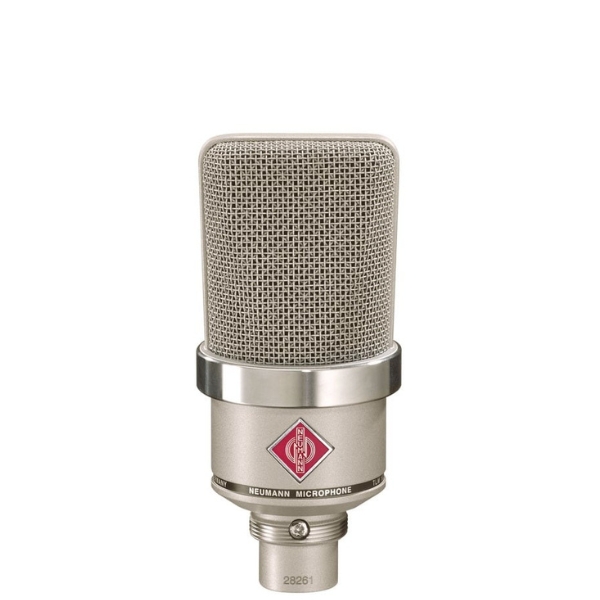
I love using the TLM 102 on vocals, or any source that requires a lot of dynamics for that matter. It's great for a really warm, articulate vocal, or for capturing the ambience of an instrument in a room, a truly versatile mic that you'll find yourself reaching for again and again.
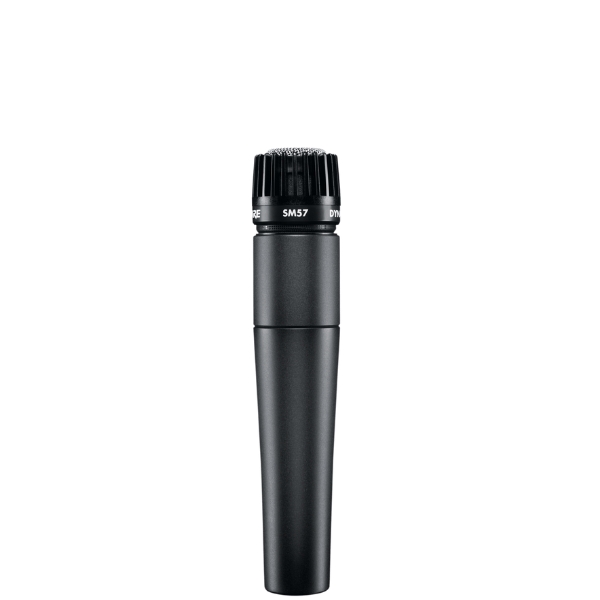
Every pro engineer has several SM57s in their collection for good reason. They're versatile, low cost, and robust enough to last forever. It's most popular use is in front of a guitar speaker or on a snare drum, but it's great on any loud sources, and a do-it-all mic that should be in every engineer's locker.
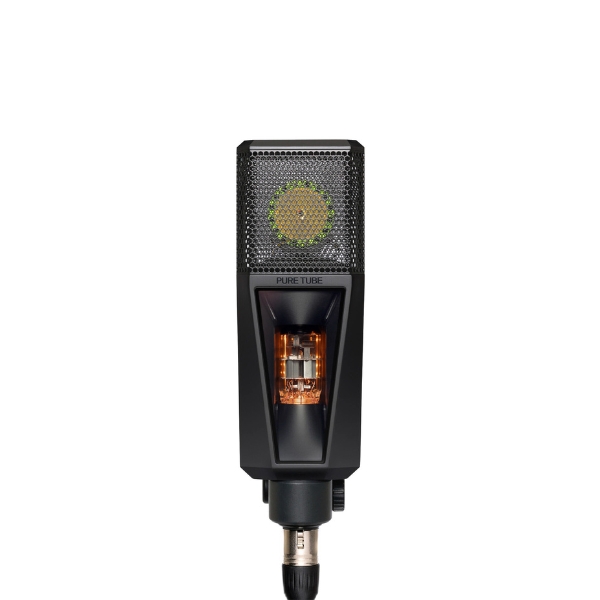
I love a tube mic for capturing the harmonic overtones and nuances of an acoustic guitar. The Lewitt Pure Tube makes sources sound really warm, and it can do an excellent job on vocals or as a drum room mic. If you can afford it, a stereo pair of these in a Blumlein configuration will work wonders on acoustic guitars.
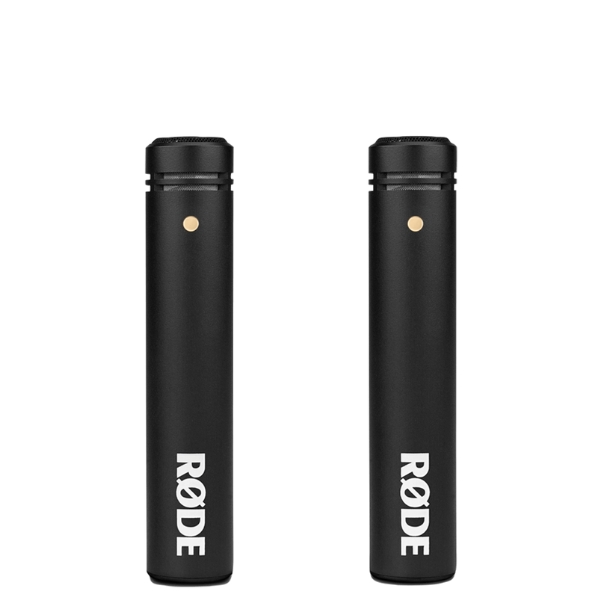
The Rode M5 is a great value for money matched pair of small diaphragm condensers that sound great on an acoustic piano, capturing the natural sound of a source beautifully. They'll do well in any scenario where a stereo pair is needed too, for drum overheads or in an X/Y configuration on an acoustic guitar.
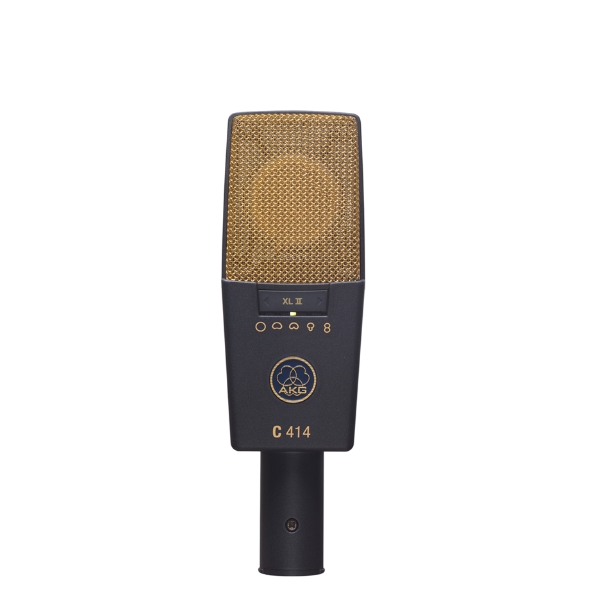
I love using a pair of AKG C414s as the overheads on my drum recordings, as they bring out all the natural liveliness of a drum kit with an open and smooth top end. With 9 polar patterns, you can use them on a huge variety of sources too, whether it's vocals or acoustic guitar.
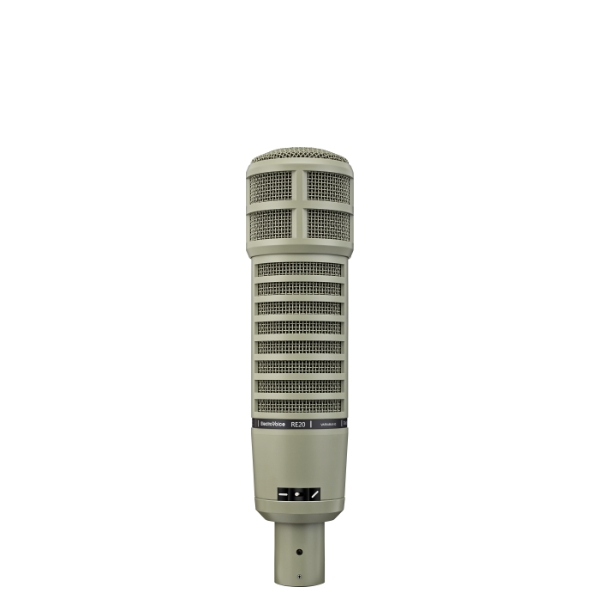
I only recently started using the Electro-Voice RE-20, and it continually blows me away with its versatility. I've used it on vocals, guitar amps, kick drums, and loads more, and it's performed admirably on a huge variety of tasks. Its excellent frequency response of up to 180 degrees makes it great for lively vocalists too.
Best for vocals
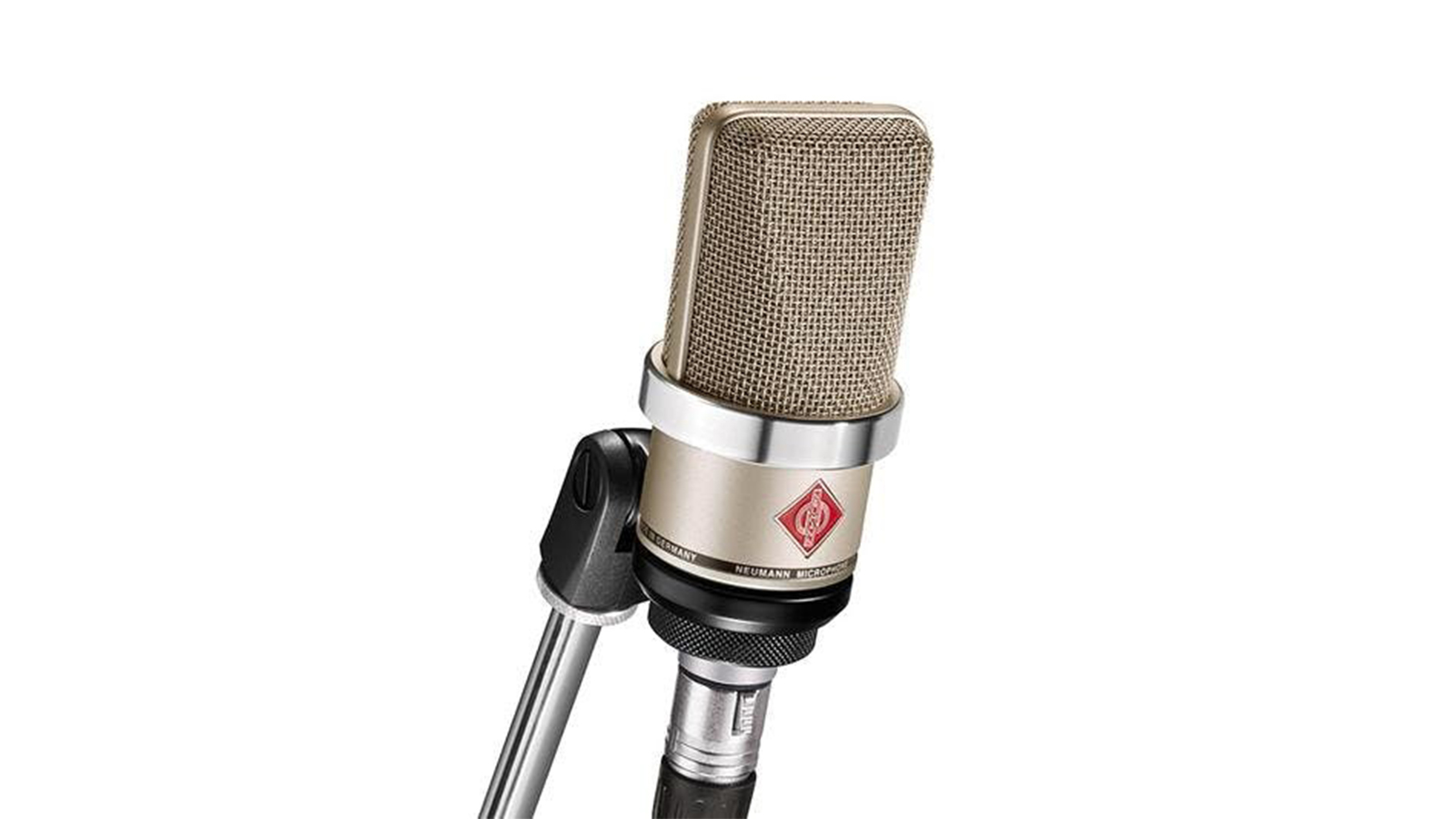
Specifications
Reasons to buy
Reasons to avoid
✅ Buy if you want a versatile condenser great on vocals: For vocal duties the TLM 102 delivers superb performance for the money. It's also great on guitars, drums, pianos, and pretty much any other source.
❌ Avoid if you need accessories: The TLM 102 doesn't come with a shock mount, pop filter, or storage case, so if you need these included in the price look elsewhere.
Overview: Neumann is one of the biggest names in the recording microphone game, and generally speaking, you need to sell a kidney to get a hold of one, which makes the TLM 102 a very tempting offering indeed. I've used the TLM 102 on a huge array of sources, and it always delivers, so despite being awesome on vocals, I also recommend it for a variety of miking applications.
Build quality: The TLM 102 is surprisingly small when you first take it out of the box, but it feels very well made. The ones at my regular studio have taken a beating over the years, but still work perfectly despite having been roughly treated. Even with dents in the metal grille it still does the job, leaving me in no doubt that the 102 is built to last.
Usability: The small size makes it easy to stick into tight spaces, but it is a shame that it doesn't come with any additional accessories to make your life easier. While I've gotten away without using a shock mount for louder sources, the built-in pop shield doesn't do a phenomenal job of stopping plosives, so I often opt for using an external pop shield when using it with a vocalist.
Sounds: The word that always comes to mind when I use the TLM 102 is clarity. I regularly use it on vocals, and it really captures the body of a vocalist alongside plenty of high-end, all beautifully articulated. I also regularly use it on the side of a snare drum for capturing those delicious overtones that come off the shell.
Placed on acoustic guitars, electric guitar amps, and additional percussive elements the TLM 102 also delivers. Although it isn't the cheapest mic on this list, for me it's a must-have condenser for any engineer's mic locker.

"So who is the Neumann TLM 102 for? For us, this marks the perfect mic for the committed home studio owner who is looking to upgrade from whatever starter gear they had to proper pro-level equipment. It’s a proper, grown-up microphone for producers with enough experience to know what ‘good’ sounds like."
Read more: Neumann TLM 102 review
Best for electric guitar
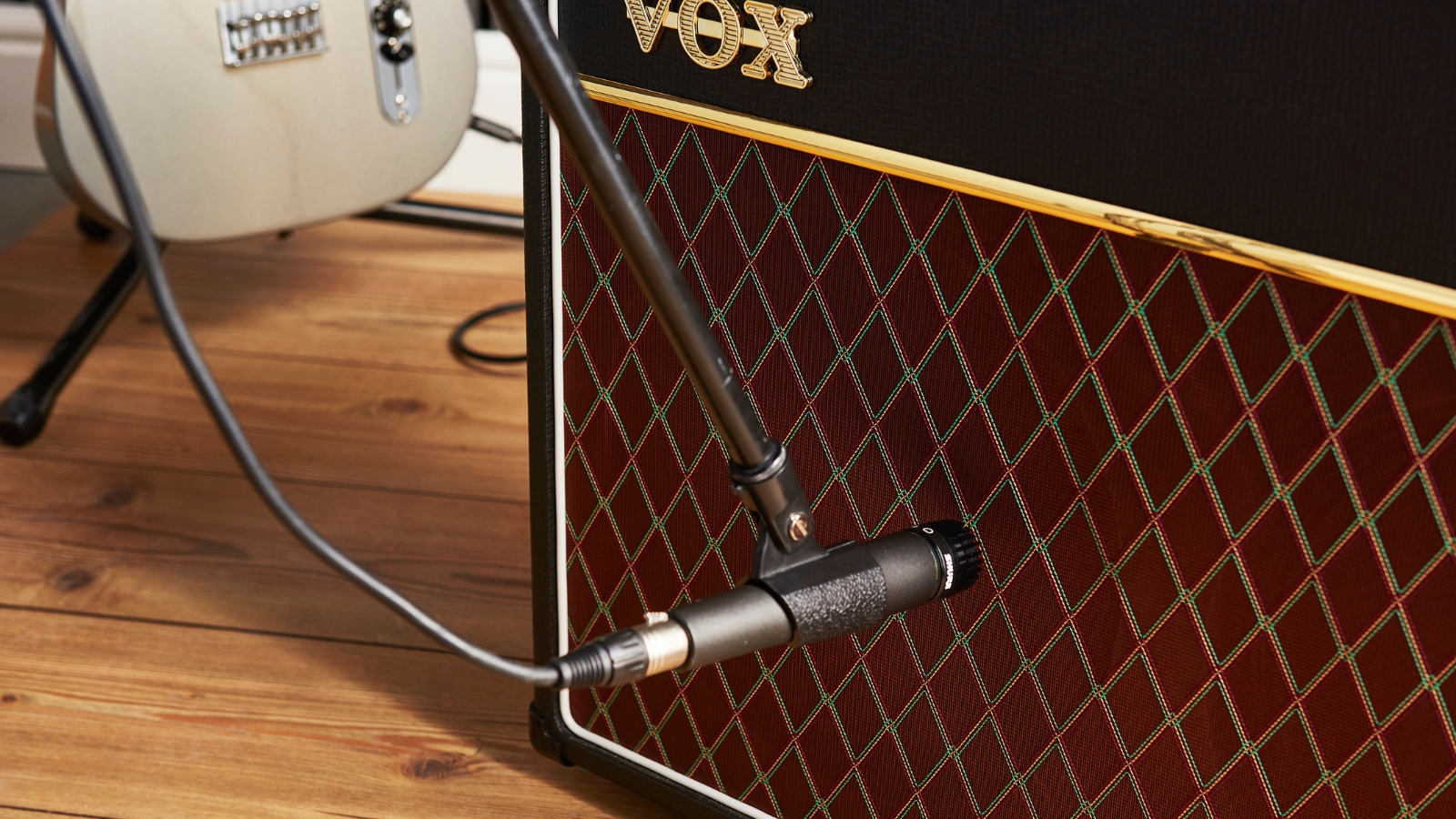
Specifications
Reasons to buy
Reasons to avoid
✅ Buy if you want to mic loud sound sources: Famous for being the go-to mic for loud guitars, the SM57 is a versatile dynamic mic you can use on anything loud like drums, brass, or even vocals
❌ Avoid if you need vocal sheen: While it can sound good on a lo-fi vocal, the SM57 won't deliver that nice vocal sheen a condenser mic will give you.
Overview: One of the most ubiquitous microphones in all of music, I can't imagine there are many studios or live venues without several SM57s in residence. Its rugged build, versatile performance, and relative low cost make it a must-have for any recording engineer.
Build quality: The build of the 57 is the stuff of legend, and plenty of YouTubers have tried their best to break it. It's not indestructible, of course, but you don't have to worry if it does accidentally get dropped or hit with a wayward drum stick.
Usability: Using the SM57 is a breeze, just point it at the source you want and away you go. It can handle a frankly ridiculous 150dB, which is jet engine territory, so you don't need to worry about overloading it. It is quite long as far a microphones go however, which can make it awkward to place, as I've often found getting it in between a set of hi-hats and snare drum.
Sounds: The SM57 is the sound of a miked guitar cabinet, delivering plenty of clarity in tone. It doesn't have quite the same frequency response as some of the condenser mics on this list, but I've never found that an issue when miking guitar cabinets or snare drums with it.
Pair it with a decent condenser mic, and play around with different placement options for a time-honoured solution that captures both the quiet and loud dynamics and the unique harmonic make-up of a valve amp’s tone. It’s not subtle, but it is certainly effective.
It also works brilliantly on snare drums, and will consistently be found miking the snare top thanks to its ability to handle massive SPL levels. If you want lo-fi vocals it can absolutely do the job there, and at this price, there's little reason not to have one in your mic locker.

"There are many reasons why the Shure SM57 remains as popular and ubiquitous now as it ever has done. Particularly for guitarists, this rock-solid, versatile and reliable mic is a trustworthy addition to any recording or performance setup and one you’ll never regret investing in. For under £/$100, it’s as close to a no-brainer as you’ll ever find in the music technology world."
Read more: Shure SM57 review
Best for acoustic guitar
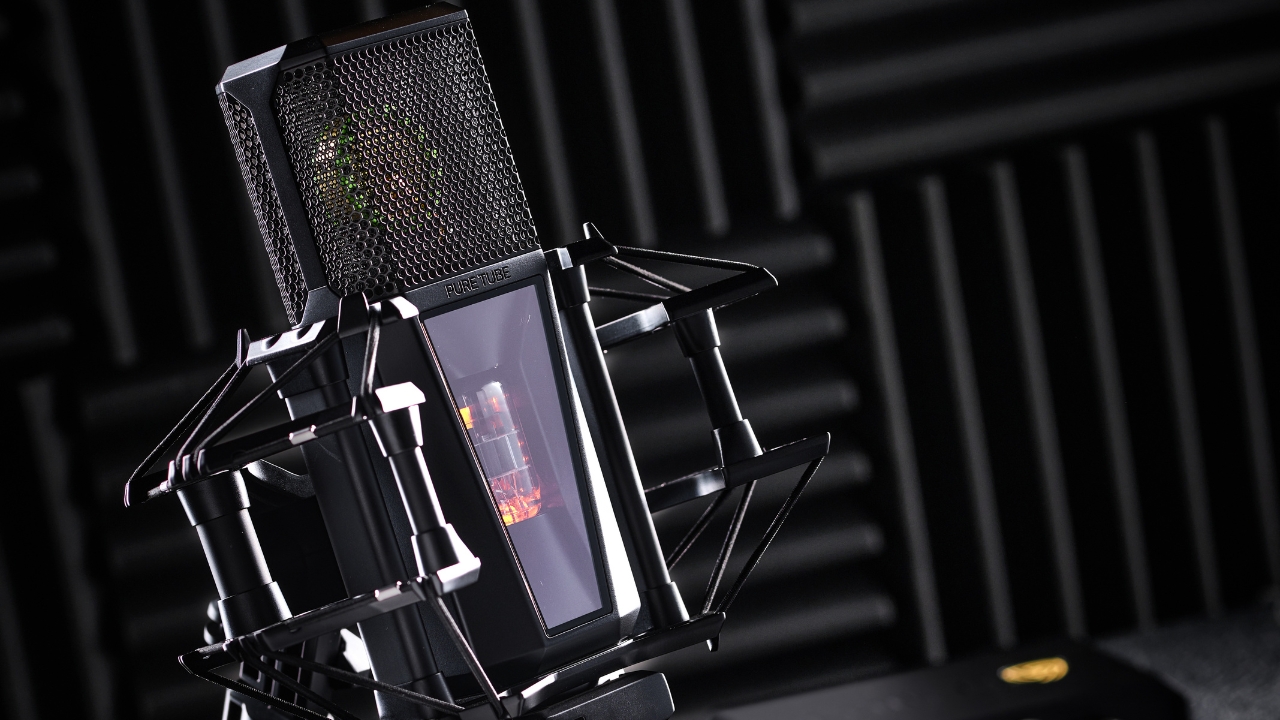
Specifications
Reasons to buy
Reasons to avoid
✅ Buy if you want a great mic for acoustic guitar: Tube mics sound fantastic on a variety of sources, but I find them particularly great for acoustic guitar, delivering a lovely warm sound.
❌ Avoid if you're short on space: A tube mic requires an additional, bulky power supply, which might make it a pain to use in small spaces.
Overview: Combining the sound of the past with the forward-thinking utility of the future, the Lewitt Pure Tube condenser mic takes a vintage tone and adds some clever touches to bring it into the realm of the modern musician.
Build quality: The body of the mic feels very rugged indeed, which is reassuring as tubes are typically quite fragile. It also comes with an incredibly robust feeling shockmount, which gives a lot of reassurance that it won't be accidentally dropped.
Usability: One of the drawbacks of tube microphones is they can be pretty noisy, but that isn’t the case here. Thanks to its dedicated power supply and some clever internal trickery, the Lewitt Pure Tube delivers incredibly quiet performance in terms of noise, even with soft fingerpicking or gentle chord work.
The dedicated power supply connects via a 7-pin XLR to the mic but includes a converter to the traditional 3-pin XLR so you can hook it up to your audio interface.
Sounds: I love a tube mic on acoustic guitars, but the Lewitt Pure Tube is versatile enough to handle a variety of sources. The frequency response is nice and flat, which makes it great for capturing the natural timbre of an instrument or vocal. It'll also do a great job as a room mic for drums, honestly capturing the natural ambience of the space it's placed in.

"To sum up, the Lewitt Pure Tube is one of the more interesting mics I’ve come across in recent years. Get past the stealthy, heavyweight industrial design and you have one of the simplest, best-executed condenser mics I’ve used in ages - tube or not. It’s not cheap, but it still manages to offer superb value across a range of studio and broadcast applications."
Read more: Lewitt Pure Tube review
Best for piano

4. Rode M5
Our expert review:
Specifications
Reasons to buy
Reasons to avoid
✅ Buy if you want a matched stereo pair: Although I've picked the M5 for miking a piano, it'll do a phenomenal job for any stereo miking scenario, whether that's drums, acoustic guitars, or stereo room mics.
❌ Avoid if you travel to record: There's no dedicated box or pouch to store these in, so if you travel a lot for recording you might want to look elsewhere.
Overview: Having a matched pair of small diaphragm condensers can be really useful for any engineer, allowing you to stereo mic different sources and know that both mics will react in the same way. The Rode M5 is a matched pair that gives you incredibly detailed sound for relatively little money, making it a top choice for recording stereo sources like acoustic pianos, acoustic guitars, and drum overheads.
Build quality: As with anything Rode makes, the M5s are very sturdy feeling in the hand, and the matte black ceramic coating present on most Rode mics is really durable. It gives them a nice sheen that makes them look more expensive than they actually are, too.
Usability: Both mics come with windshields, and you get an individual mount for each mic, but there's no stereo bar if you wish to use them as a spaced pair, so you'll have to get the tape measure out. The small size means they're easily positioned no matter what you're trying to capture, but there's no low cut or pad on the mic body itself, so you'll have to take care of that during your gain staging and in your DAW.
Sound: With both mics having no more than 1dB of sensitivity between one another, it's no surprise to find they excel as a stereo pair. Placing them either side of a piano players head, pointed at the open top panel gives you a lovely and bright tonality that really highlights the rhythmic aspect of the instrument.
They sound excellent on acoustic guitar too, and as a pair of drum overheads with the low end nice and tight while the highs are captured without any hint of harshness. If you want a smooth and detailed sound on a budget, this matched pair is an excellent choice.
Best for drums
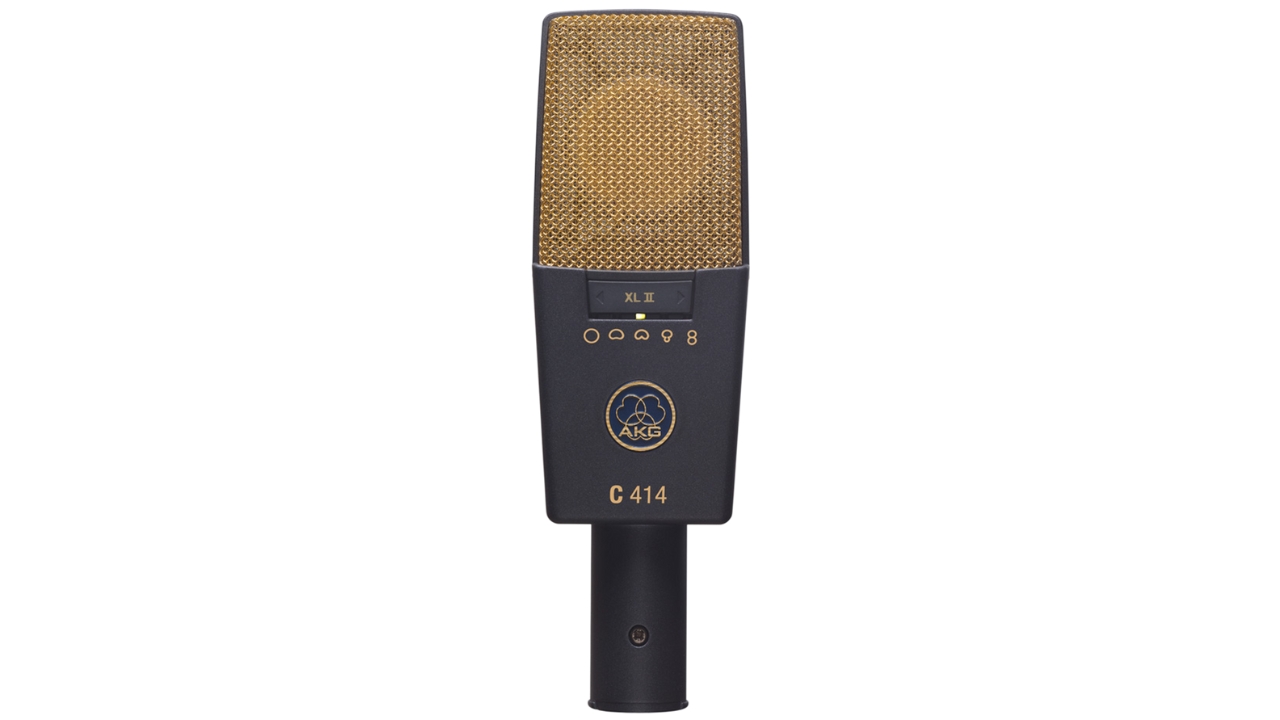
5. AKG C414 XLII
Our expert review:
Specifications
Reasons to buy
Reasons to avoid
✅ Buy if you want a premium condenser mic: Great for a variety of sources, the AKG414s are brilliant as drum overhead or room mics, as well as being excellent on vocals too.
❌ Avoid if you're on a budget: This is a premium microphone so it isn't cheap, especially if you want to grab a pair of them for stereo miking.
Overview: Alongside the legendary C12, the C414 is one of the most well-known microphones that AKG manufactures. It's an incredibly versatile condenser microphone that's most often found on drum overheads, but is equally adept at vocals, acoustic guitars, pianos, strings, and pretty much anything else.
Build quality: It's a robust microphone that's built to be used in professional studio environments, and although I'd hesitate to call it heavy, it definitely feels good quality in your hand. The gold and black detailing looks fantastic, and the buttons on the front for changing polar pattern feel nice and solid too.
Usability: Having so many different polar patterns mean's they can play a variety of roles, whether you're using them for close miking a vocalist or placing them in a corridor as a drum room microphone. The addition of a wide cardioid mode is a nice touch, and the relatively small size means you can move them into a good variety of positions without feeling like they're getting in the way.
Sounds: The sound of a C414 is a truly beautiful thing, and these mics capture that original essence incredibly well. It captures sources in a detailed and clear manner, picking up plenty of the low-end energy of the kick and floor toms, as well as plenty of high-end shimmer of the cymbals without ever feeling harsh.
They sound phenomenal on vocals too, with plenty of body and loads of clarity in the high end. They absolutely do the trick on acoustic guitars, pianos, additional percussion instruments, and pretty much anything you chuck it on, making it a great option if you need a 'do-it-all' type microphone.
Best for versatility
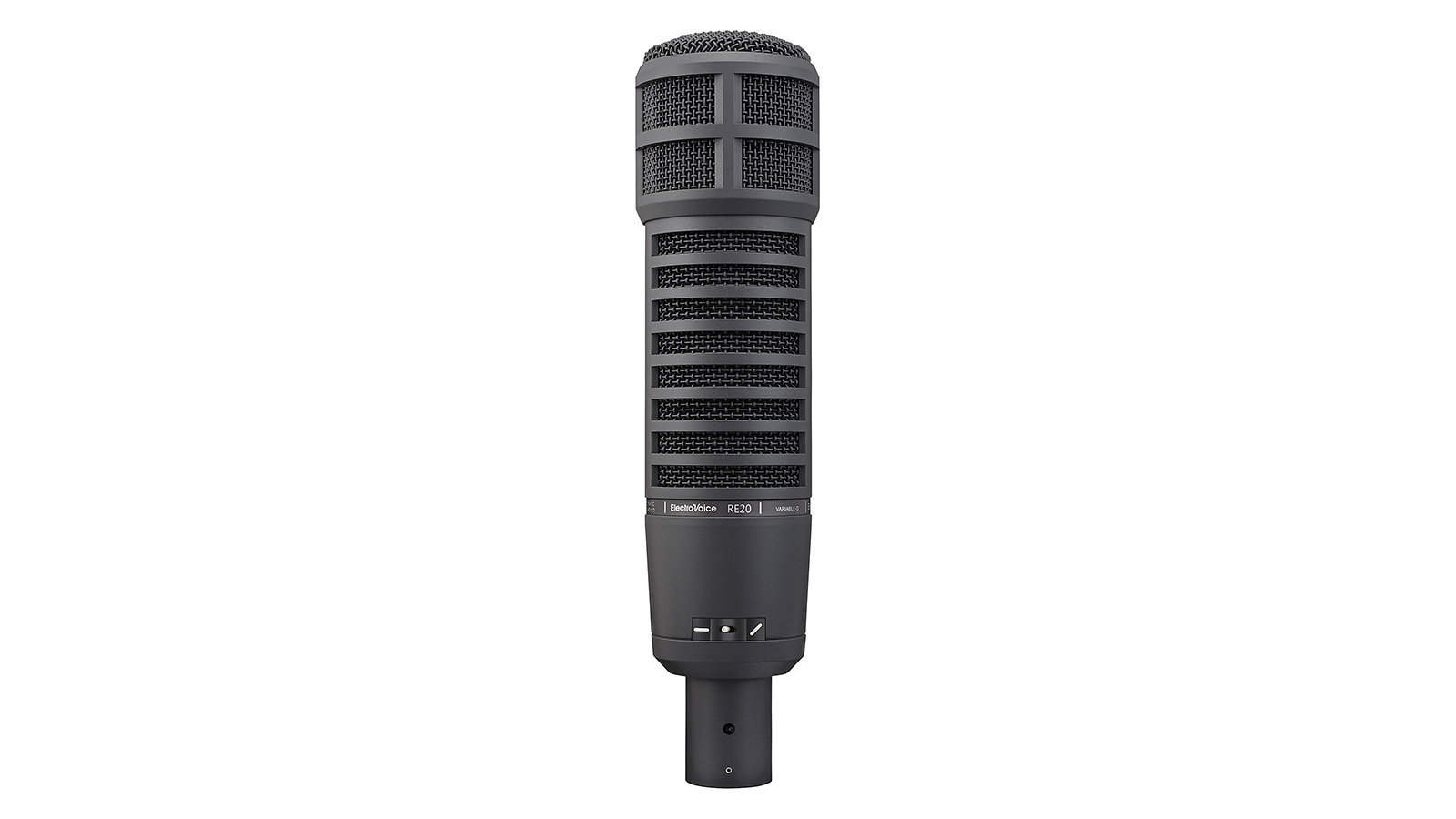
6. Electro-Voice RE20
Our expert review:
Specifications
Reasons to buy
Reasons to avoid
✅ Buy if you want a versatile mic that can handle a lot of roles: It may look vintage, but the RE-20 is an incredibly versatile dynamic mic that sounds just as good on vocals as it does on a kick drum.
❌ Avoid if you need to get into a tight space: The RE-20 is quite long as far as microphones go, which could make it problematic if you're miking something in a tight space.
Overview: The RE20 was originally developed to rival the extended frequency range of a good condenser mic, using a clever take on cruder dynamic technology. In our opinion it fell a little short, physics is physics after all, but Electro-Voice succeeded in producing an altogether more interesting product.
Build quality: The RE-20 features rugged build quality, and having used one in the studio for some time now I have zero qualms it'll let you down. Despite the vintage looks it feels absolutely rock solid and able to put up with plenty of abuse.
Usability: It uses what Electro-Voice calls Variable-D, which is essentially a perforated pipe placed behind the diaphragm that brings some distinct advantages. Most significantly, there is little to no proximity effect. Some mics sound muddy when close miked, while others do manage to successfully combine warmth with clarity. Nevertheless, good or bad, the proximity effect does colour the original sound source, which is not always desirable. The RE20 sounds completely natural, even when used at close quarters.
Another potential issue with the proximity effect is that humans are pretty hopeless at consistently speaking into a microphone from the same distance. As we get distracted we tend to move in, out and generally shake it all about, causing our voice to fluctuate in tone. The RE20 has a consistent frequency response up to 180 degrees off-axis, which means there’s zero colouration to contend with, regardless of how fidgety your talent is.
Sounds: Although the RE20 can’t match condenser levels of top-end sparkle, it really does have an extended frequency response, which makes it a good choice for vocals and instruments as well as voice applications. It exhibits a tight low-end too, which is perfect for taming guitar cabs, kick drums, and low-frequency instruments such as double bass.
Best budget
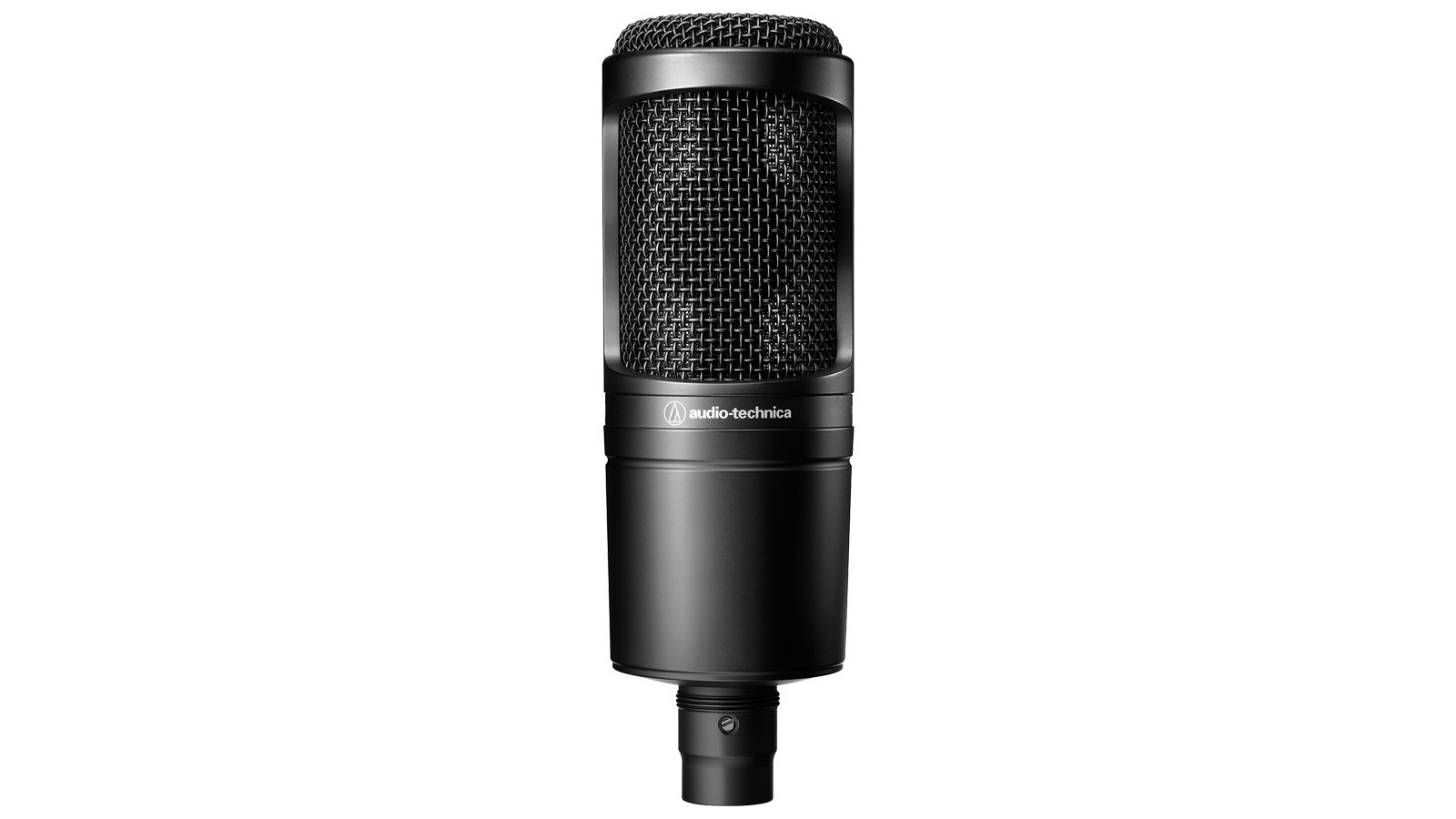
Specifications
Reasons to buy
Reasons to avoid
✅ Buy if you want a budget or first microphone: If you're just getting started recording or need something good that's cheap, the AT2020 delivers superb value for your money.
❌ Avoid if you're miking quiet sources: This isn't the quietest microphone on this list, so if you're looking to mic a quiet source then you should check out some of the other condenser mics on this list.
Overview: The Audio Technica AT2020 regularly tops best-seller lists thanks to its combination of great sound and reasonable price point. Condenser mics are extremely versatile, so if you need a budget mic for multiple applications, it’s a great choice.
Build quality: For the money you do get a mic that feels just as well built as AT’s pricier microphones, making it perfect for budding engineers on a budget. It doesn't feel cheap at all in the hand, with a decent weight to it and solid feeling build that will put up with getting chucked about in the studio.
Usability: It rejects off-axis noise really well, but it isn’t the quietest mic I’ve ever tested. The lack of a shock mount helps keep the cost down, but condenser mics perform much better with one, so that will add to your spend a little, ditto with a pop filter.
Sound: The AT2020 flatters vocalists with its warm lower mid-range, and I found it sounded great on pianos and for capturing room ambience. The subtle high-end lift adds some air, but it never got harsh when I was testing it, and there was no hint of an overly sibilant sound.

"There's no doubt that the microphone deserves success in its intended area, that of providing high-quality home recording for podcasters, musicians and for voiceover requirements alike. This market continues to become increasingly competitive, so if you like the idea of a USB microphone for any of these applications, be sure to familiarise yourself with the features and options of Audio Technica's rivals too."
Read more: Audio Technica AT2020 review
Best for YouTube
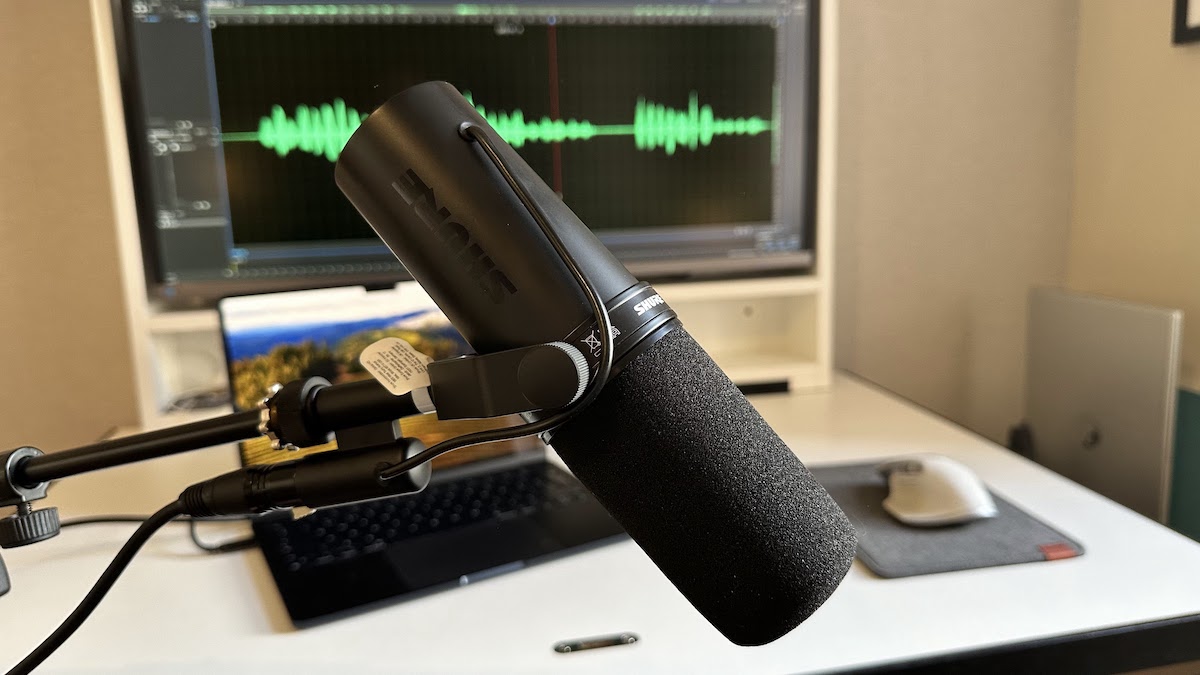
Specifications
Reasons to buy
Reasons to avoid
✅ Buy if you want to create voiceovers for YouTube: You've probably already seen the SM7B if you're a regular on YouTube, so if you want to give your channel some top quality spoken word then this is the mic you should go for.
❌ Avoid if you're on a budget: This microphone isn't cheap, so if you're on a tight budget you'll need to look elsewhere for your content creation needs.
Overview: If you watch vloggers on YouTube you’ll see the SM7B mic pop up again and again. For many, it’s the de facto mic for content creation, and for good reason. The Shure SM7dB is an update to a now legendary mic, putting aside it's one major criticism with the addition of an active preamp.
Build quality: it’s been designed for pro use, which is why it includes some nifty additions such as switchable EQ settings, a built-in pop filter, electromagnetic shielding, a suspension mount and a windscreen. It’s built like a tank too, so will easily shrug off the inevitable knocks, scrapes and probably the occasional drop.
Usability: It loves broadcast applications but is commonly found perched in front of vocalists, guitar amps, bass amps, kick drums and horns too. I often use this mic on the hi-hat of a drum kit, and it's much loved for loud, heavy metal growls too.
Sounds: For close miked applications, it sounds wonderful. Bring your laughing gear right up to this baby and you’re going to sound fantastic – rich and warm, yet with clarity aplenty. Trust us, you’re going to sound just like you, only better.
Another benefit is that it makes even untreated rooms sound great. Or, put another way, those awful reflections that haunt poorly treated rooms – you know, like your home studio – won’t intrude on your recordings. Wherever you are, every day with the SM7dB is a good day.

"The Shure SM7dB is a worthy successor to the SM7B, offering all the benefits of its predecessor with the added convenience of an integrated preamp. Its robust design, excellent sound isolation, and versatile features make it a top choice for professionals in various audio fields."
Read more: Shure SM7dB review
Best for podcast
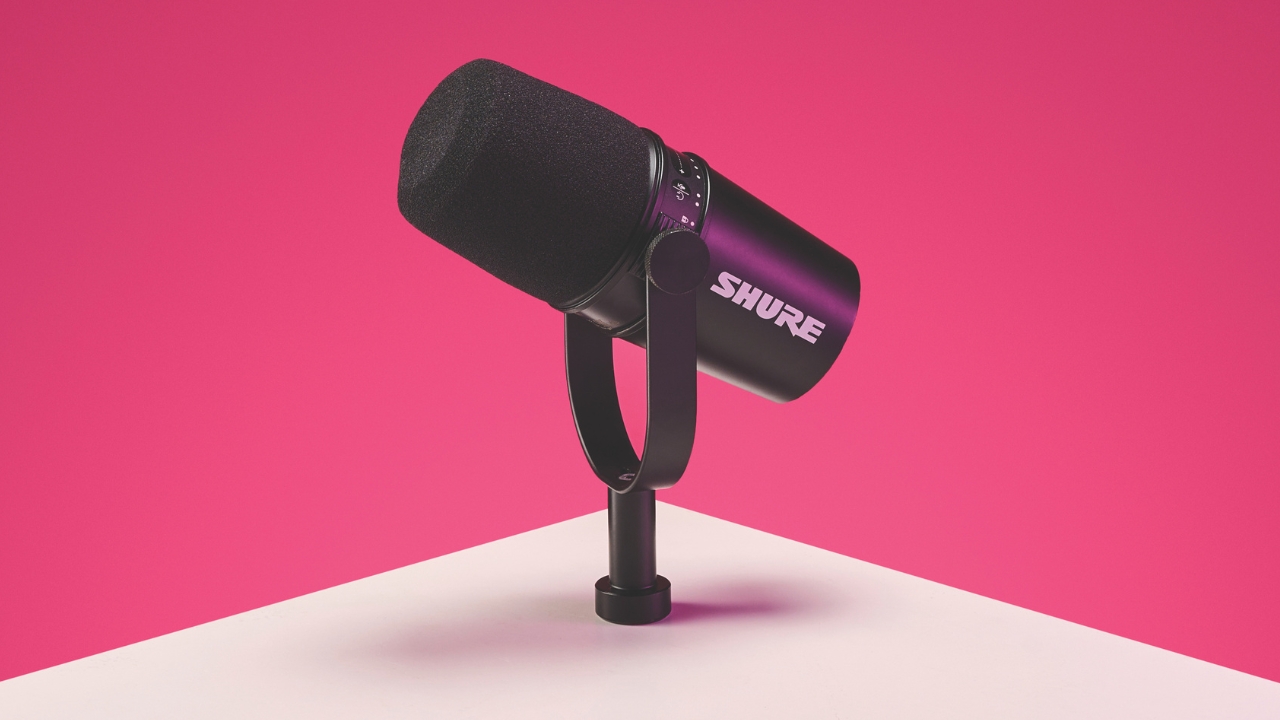
Specifications
Reasons to buy
Reasons to avoid
✅ Buy if you want an easy to use podcast mic: Packed with useful features for those who aren't so fluent in audio engineering, the Shure MV7 is the ideal mic for podcasting.
❌ Avoid if you need traditional studio use: It can do a decent job of playing the dynamic mic role in a studio, but there are others on this list that are much better for that kind of scenario.
Overview: Shure have long been one of the first names pro musicians look to for their microphones. Shure's range doesn't just cover those options for musicians, however - as the MV7 is a great option for those looking to record crisp speech on a budget.
Build quality: As with anything Shure-made, the MV7 feels ruggedly built. It's not quite as solid as something like the SM57, but then this mic is designed to be used in podcast studios, not chucked into the back of a van and taken on tour.
Usability: The MV7 is ideal for these applications, with a few neat tricks on hand to make the recording experience as simple and rewarding as possible. I particularly like the complementary MOTIV app, which allows you to choose specific vocal presets to give your sound a professional sheen.
The ability to use it with a USB connection is also something that will no doubt appeal to content creators out there. It means no additional audio interface is required as the voice isolation and auto level features will take care of crafting the audio for you. It also has a dedicated headphone output built in so you can monitor your audio.
Sounds: This isn’t going to be the mic musicians or singers will look to. Sure, it can handle these applications at a push, but this is a speech-specific microphone and, at that, the MV7 is a highly capable option indeed.
Read the full Shure MV7 review

"What impressed us about the Shure MV7 was the fact it aims to do two things, and it achieves them both successfully. For less tech-savvy users, the MOTIV app and ease-of-use you get from the USB connection is ideal. It works in exactly the way you’d want it to, and is as simple as it gets thanks to helpful tools like the auto-level mode and voice isolation technology."
Read more: Shure MV7 review
Spec comparison
If you need some more help deciding between any of the microphones in my top picks, here's a handy spec comparison table that puts all the key facts side by side.
Model | Type | Pattern | Freq. Response | Max SPL | Connector |
|---|---|---|---|---|---|
Neumann TLM 102 | Condenser | Cardioid | 20Hz-20kHz | 144dB | XLR |
Shure SM57 | Dynamic | Cardioid | 40Hz-15kHz | 150dB | XLR |
Lewitt Pure Tube | Tube condenser | Cardioid | 20Hz-20kHz | 132dB | XLR |
Rode M5 | Condenser | Cardioid | 20Hz-20kHz | 140dB | XLR |
AKG C414 XLII | Condenser | Omni, Wide Cardioid, Cardioid, Hypercardioid, Figure-8 | 20Hz-20kHz | 140dB | XLR |
Electro-Voice RE20 | Dynamic | Cardioid | 45Hz-18kHz | 140dB | XLR |
Audio Technica AT2020 | Condenser | Cardioid | 20Hz-20kHz | 144dB | XLR |
Shure SM7dB | Active dynamic | Cardioid | 50Hz-20kHz | 180dB | XLR |
Shure MV7 | Dynamic | Cardioid | 50Hz-16kHz | 132dB | XLR/USB |
Also consider
Whilst I've picked out a selection of mics for specific use cases above, there is no one correct microphone for every scenario. That's why engineers have a collection of microphones to choose from, as different mics work better on different sources. So, if you didn't find what you were looking for above, here are some more great mics we've reviewed.
Sontronics Aria
Condenser | Cardioid | 20Hz-20kHz | XLR
With everything plugged up, the first thing that's obvious with the Aria is just how natural it sounds. There's definitely a slight presence lift, but this is in the upper mids rather than right into sibilant territory. Beyond this there's no high frequency hyping, or the brittleness that plagues mics of that ilk. So, one's attention is drawn to the lows and low mids. These feel solid and although there is a small proximity effect, it's not at all overbearing.
★★★★★
Read more: Sontronics Aria review
Audio Technica AT5040
Condenser | Cardioid | 20Hz-20kHz | XLR
With a new large diaphragm condenser mic there's rarely anything unusual to discuss. After all, the focus is typically on the general frequency response, pickup pattern, build quality, and sound. Audio Technica's AT5040 ticks all the boxes of a typical high-end phantom-powered condenser mic with its discrete component design, low noise, high SPL handling, and decent shock mount. Look closer, however, and you will find some special touches. The noise figure is exceptional, and the quick release cradle is beautifully designed.
★★★★★
Read more: Audio Technica AT5040 review
JZ Microphones Vintage V12
Condenser | Cardioid | 20Hz-20kHz
Based on the classic AKG C12 mic, the JZ Microphones Vintage V12 is a reissue that isn’t a complete copy. Whilst it's looking to emulate the good qualities of a classic vocal mic, it still has a voice of its own, with many different design decisions too. It’s not quite as bright as the C12, but it still delivers a clear, crisp tone that sounds incredible on vocals. It sounds beautiful up close with a pop shield attached but you don’t have to use one if you stand back far enough.
★★★★½
Read more: JZ Microphones Vintage 12 review
Rode NT1 Signature
Condenser | Cardioid | 20Hz-20kHz | XLR
The ubiquitous NT1 from Rode Microphones is now in its 6th generation and one of the most popular affordable large capsule cardioid condenser microphones out there. The big difference with this latest model is the return to the original design, doing away with USB in favour of a classic XLR-only connection.
★★★★½
Read more: Rode NT1 Signature review
Sontronics Solo
Dynamic | Cardioid | 50Hz-15kHz | XLR
The Solo is a well-weighted, solid microphone; light hand-held mics suck. The grille has a flat front which we much preferred to the usual bulbous type: it not only gives a more consistent distance guide when up close, it is also less likely to knock your front teeth out in a rowdy club gig.
★★★★½
Read more: Sontronics Solo review
Audio Technica AE2300
Dynamic | Cardioid | 60Hz-20kHz | XLR
The AE2300 is a broad-application high-SPL cardioid design, so should be ideal for percussion, drums, guitar amps and brass. It’s also pretty compact (less than 10cm long), so is perfect for discrete use in a live environment. During testing, we found that the weighty brass casing and top grille felt robust, and the screw-tight rubberised clip should see off any wandering drumsticks while providing some mechanical isolation.
★★★★½
Read more: Audio Technica AE2300 review
Aston Microphones Origin
Condenser | Cardioid | 20Hz-20kHz | XLR
The Aston Origin may be competitively priced, but it possesses a degree of originality that is uncommon in this range. The Origin is a fixed pattern (cardioid) condenser and is the smaller of Aston's two mics: the larger Spirit is a multi-pattern condenser with an extra 10dB of pad available. There are two switches on the stainless steel casing: 10dB pad and 80Hz low-cut filter.
★★★★½
Read more: Aston Microphones Origin
Slate Digital VMS ML-1
Condenser | Cardioid | 20Hz-20kHz | XLR
There have been a few plugs over the years which have claimed to give one mic the character of another but, given the limitations of the original mic, coupled with any number of mic pres that could have been used, plus the quality of the interface that recorded it, most of them have been pretty disappointing. Slate Digital have taken that idea and built a complete system which removes as many of those variables as possible.
★★★★½
Read more: Slate Digital VMS review
AKG C636
Condenser | Cardioid | 20Hz-20kHz | XLR
As a condenser mic, the C636 is inherently more complex than its dynamic siblings, a complexity that comes at a cost in both R&D and production. Issues with feedback rejection and handling noise have to be balanced against tradeoffs in sound quality. Behind the simple black exterior and lightness in hand, the C636 boasts serious design chops to give it the ‘Master Reference’ moniker, but is it deserved? In short, yes. The sound is clear and full, far more linear and ‘real’ than its dynamic mic counterparts.
★★★★½
Read more: AKG C636 review
sE Electronics sE2200a II
Condenser | Cardioid, Omni, Figure-8 | 20Hz-20kHz | XLR
Like many large capsule condensers, omni mode on the sE2200a II is unlikely to be this mic's forte, and the MkII's response shows a noticeable dip (6dB) around the 5kHz mark. However, in use this wasn't that obvious, and is possibly compensated slightly by the gentle boost above 7kHz. Either way, both patterns are useful inclusions, and save you the trouble of buying or setting up another mic, should you want to try out different patterns.
★★★★½
Read more: sE Electronics sE2200a II review
AKG C214
Condenser | Cardioid | 20Hz-20kHz | XLR
While some of the mics we feature in this guide serve one specific purpose, there’s always room for a good all-rounder. The AKG C214 is a large diaphragm condenser which will excel at everything from guitar amps to acoustic instruments, pianos and vocals. We found the C214 to deliver a pretty vast frequency range, and while the higher frequencies of your sound can be accentuated a little more with this microphone, this means that the common issue of muddy, mushy-sounding low end is a thing of the past.
★★★★☆
Read more: AKG C214 review
IK Multimedia iRig Stream Mic Pro
Electret condenser | Cardioid, Figure-8, Omni | 20Hz-20kHz | XLR
We’re big fans of equipment that can carry out more than one function. IK Multimedia are the masters of finding new and innovative ways of increasing the capabilities and tricks their products offer, and the iRig Stream Mic Pro is a great example. Combining a dual-capsule condenser mic - with four different pickup patterns - with a 2 in/4 out audio interface for connecting different sound sources and outputs, means you really only need this device and you’re up and running.
★★★★☆
Read more: IK Multimedia iRig Stream Mic Pro review
How to choose
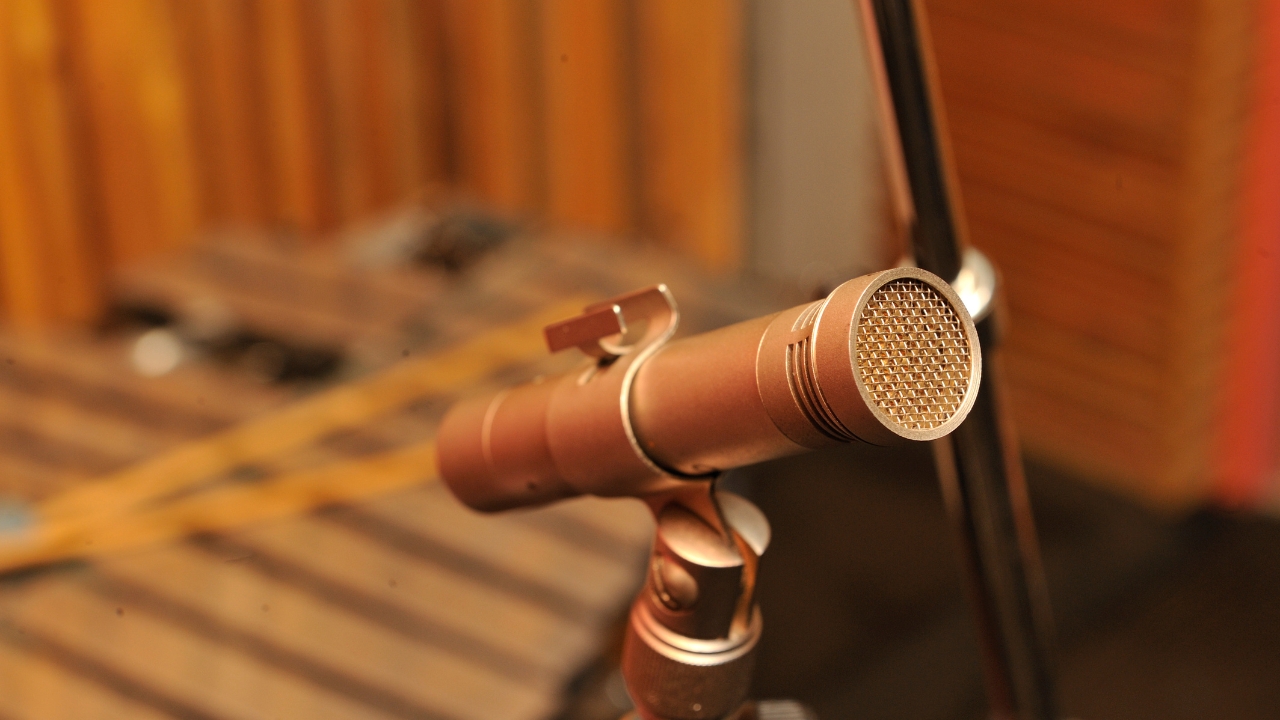
As with any piece of audio gear, the first question you need to ask yourself is, ‘What sound am I looking for here?' Establishing your sonic objectives early on in the production process will enable you to choose the right kit for the job, including microphones. It's unlikely you'll have a precise notion of how the final recording will shape up, but even a vague idea of the direction you want to take will enable you to make a good start, which is half the battle.
How microphones work
MusicRadar's got your back
To fully understand how to choose between one recording microphone and another, let's take a quick look at how they work. Essentially, sound waves generated by a vocalist, an acoustic guitar, a flute, a pregnant elephant or whatever else you're trying to record will hit a flexible diaphragm inside your microphone.
As the diaphragm moves it generates an electrical signal that travels down a cable to your amplifier, desk or recording interface. The majority of the time this signal will end up at a studio monitor or pair of studio headphones, where it causes a speaker cone to fluctuate. These movements cause the air pressure to change, generating sound waves that match your original source. Yes, it still seems like magic to us too.
OK, there's a bit more to it than that, but if you think about it the microphone and speaker work in a very similar way. The mic's diaphragm and the speaker's cone are doing pretty much the same thing but in reverse. One is converting sound into an electrical signal and the other is converting it back again.
The way in which a mic's diaphragm handles the conversion will impact the characteristics of our sound, so we need to make sure our microphone choice aligns with the sonic ambition we set out in step one. Three types of diaphragm, and their associated electrical gubbins, account for the vast majority of microphones found in studios today – the dynamic mic, the condenser and the ribbon. Let's take a closer look.
Dynamic, condenser, or ribbon?
Dynamic - Life is pretty darn simple for the dynamic mic. It's little more than a conductive coil, sat in a magnetic field, that’s attached to the rear of a diaphragm. As sound waves enter the microphone the diaphragm flexes, moving the coil which generates an electrical signal. The process is crude and insensitive but it works surprisingly well.
Their no-nonsense build means there's little to go wrong and, in order to support the coil, they're equipped with relatively hefty, robust diaphragms. They're also passive devices, which means that, unlike condenser mics, they don't need phantom power in order to operate. These attributes make them well-suited to the rough and tumble of life on the road.
Their insensitive nature, a product of the thick diaphragm and robust coil, does limit their frequency response, but that's not entirely bad news for live use or for recording in untreated rooms such as the typical home studio. The last thing you need is a mic so sensitive that it picks up every bit of background sound, every reflection and handling noise. They also excel at mic'ing loud sound sources that would damage most condenser mics.
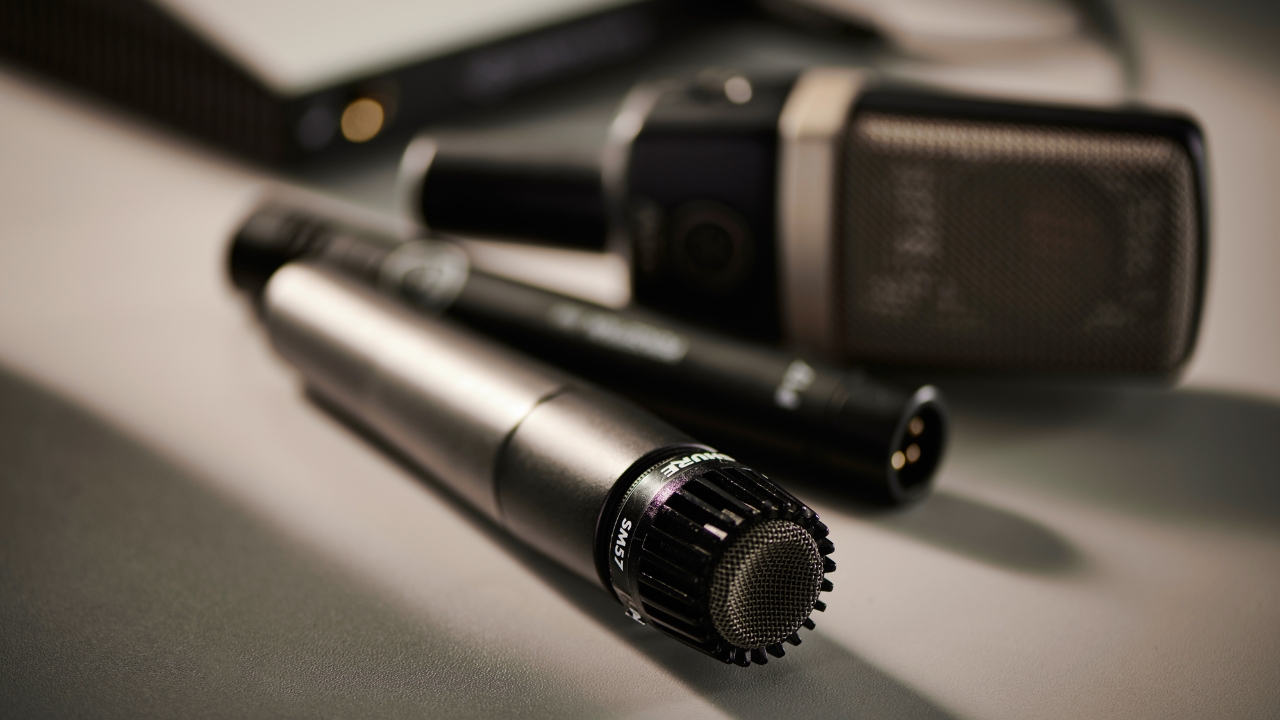
Condenser - Condenser microphones are far more sensitive and substantially more complex because they rely on capacitance to generate an electrical signal. Two conducting plates are needed to generate the signal, so the condenser mic features a rigid backplate in combination with a thin diaphragm, which acts as the second conducting plate. As the diaphragm moves, the distance between it and the backplate alters, which causes a variance in electrical charge or capacitance, resulting in a signal.
The diaphragm can actually be incredibly fine, a quality that enables it to vibrate very freely, very fast. This gives condensers a wide, relatively colourless frequency response, which is perfect for reproducing sounds extremely faithfully.
They are especially good at picking up delicate sounds higher up the frequency spectrum, areas that dynamic mics just cannot reach. That's why you'll find condensers mic’ing up acoustic guitars, hi-hats and vocals.
Due to their complexity, condenser mics can often run much pricier than dynamic mics. Generally speaking, they're also less robust and better suited to life in a warm dry studio than the back of a damp van. They need phantom power in order to operate but this does give them higher output levels, so they don't need as much potentially noisy gain at the preamp to generate a decent signal.
Large-diaphragm condensers, especially the tube variety, have a reputation for warming up vocals in the most delightful way. In contrast, small diaphragm condensers are usually very transparent, making them the go-to mics for strings, hi-hats, drum overheads and any other instrument where colouration isn't desirable.
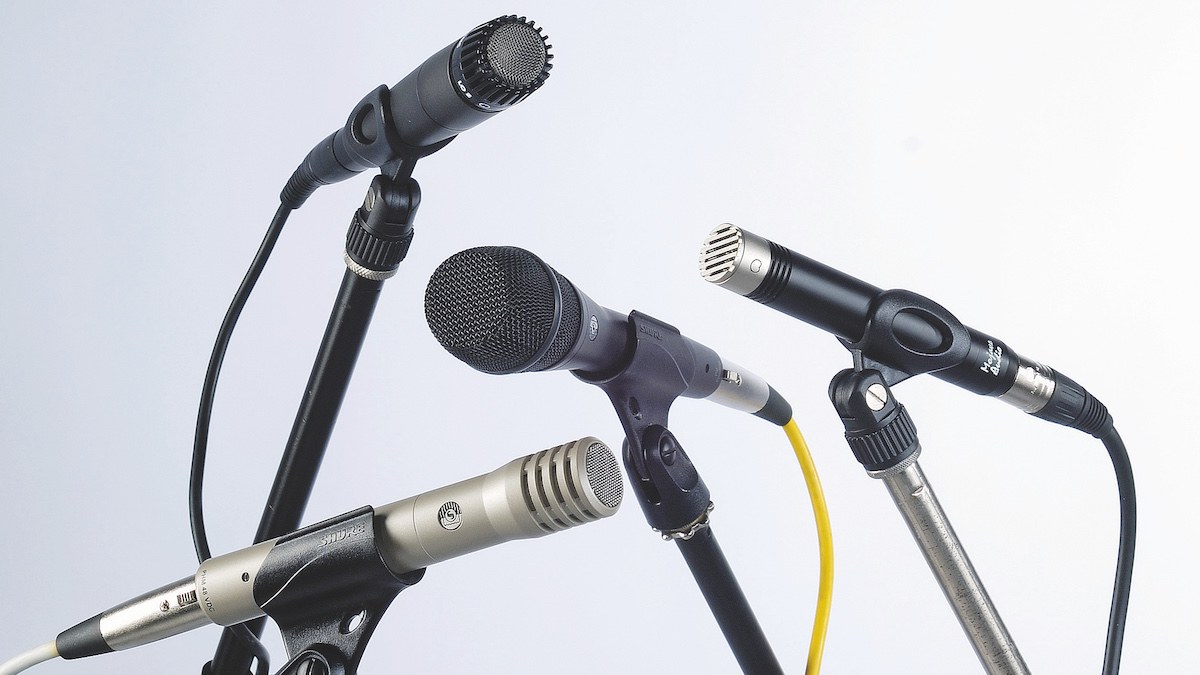
Ribbon - Passive ribbon mics were all the rage in recording and broadcast studios a century ago or so. In fact, they were the microphones of choice, with condenser mics only finding favour from the 1950s onwards. As the name suggests, they feature a ribbon-like diaphragm to record sound, which imparts a gradual but pronounced top-end roll-off that just happens to mirror the way that humans hear.
This gives them a beautifully smooth, natural tone that’s perfect for vocals and many other studio applications that don’t benefit from an extended top end. They fell out of fashion because the ribbons are both delicate and require a high-impedance, high-gain preamp. Frankly, back in the 1950s, the then-new-fangled active condensers were a lot less hassle for engineers, despite potentially sounding less characterful.
Now, as producers finally begin to appreciate that inherent smoothness, ribbon mics are making a comeback. They still need to be handled with a modicum of care, but the advent of onboard active technology in some models, such as the sE Electronics VR2 Voodoo and Røde NTR, has solved the requirement for an expensive preamp.
Neither type of mic is better overall, but a dynamic will be best suited to some applications and a condenser more appropriate for others. Every mic model has a unique frequency response curve, which defines whether it will colour the sound source dramatically or barely at all. If you're lucky enough to own a few mics, recognise their characteristics and learn to use them to your advantage.
What about tube/valve and FET mics?
Back in the day, valve (aka tube) technology ruled, but in truth, this was because it was the only solution available. Then, from the 1950s onwards, small semiconductors known as transistors began to take over because their technology was more efficient, more reliable and more cost-effective. Not necessarily better, just different.
If you see a microphone labelled as FET, then it relies on transistor technology, which is valued for its accuracy and high transient response. A valve microphone, on the other hand, may lack that high-end response but should more than make up for it in warmth.
Generally speaking, FET mics are fantastic for recording hi-hats and the like, while valve mics excel at vocals. In reality, though, their purpose is not so tightly defined, which means you’ll still get great results recording a vocalist with a FET mic.
FET mics tend to be less expensive, and more commonplace, than valve mics.
What are polar patterns?
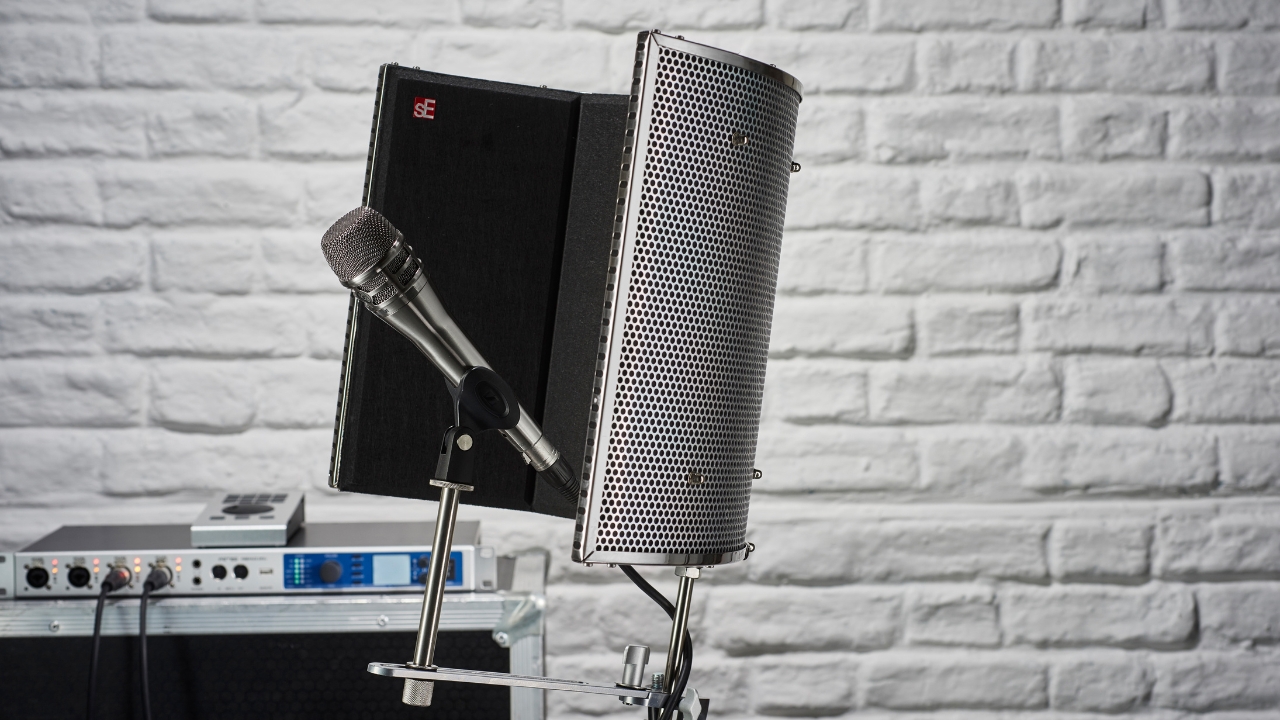
The area or direction from which a microphone captures sound may be very wide or extremely narrow. This directivity, known as a polar pattern, is useful when you need to include or exclude certain sounds. It also affects tone, so you can use different mics to experiment with what is captured and how it's coloured.
Omnidirectional mics, or omnis, pick up sound from all directions. They sound open, with a gorgeous bass response, which makes them a wonderful choice for vocals. Unfortunately, they are susceptible to room noise and prone to feedback, which makes them a poor option for live use.
Cardioid mics are most sensitive to sounds in front of the mic and capture very little from the rear. This makes them very popular for semi-isolating vocals or other sound sources, both on stage and in the studio. They are susceptible to the proximity effect, which is a boost in bass frequencies as the mic is brought closer to the action, but this can be desirable depending on the result you are trying to achieve. Radio DJs and voice-over artists often favour the proximity effect because it can make them sound smoother, but some instruments just end up sounding muddy.
Supercardioids and hypercardioids have increasingly narrow patterns, which makes them perfect for isolating vocalists on stage, provided the talent doesn't move outside the pickup area! The proximity effect is even more evident but feedback risk is almost non-existent.
Figure 8 microphones have a bidirectional pattern that picks up sound from the front and rear but rejects it from the sides.
They can be used to record two vocalists singing into the same mic or a vocalist and an instrumentalist, but they are most commonly used with an additional mono mic to record in a very effective stereo configuration called mid/side (MS).
How much do recording microphones cost?
The old adage that 'you get what you pay for' holds true when it comes to investing in the best microphones for recording, but with some important caveats.
Dynamic microphones can be substantially cheaper than condensers, and yet they can perform better for some applications such as capturing live performance. If you have limited funds then you may be better off spending your money on a really decent dynamic mic, like a Sontronics Solo at circa £99/$135/€111, rather than a 'cheap' condenser. There's nothing to stop you from using a good dynamic mic in the studio.
Iconic condenser mics are a sight to behold and objects of desire to covet. We'd have a mic locker full of them if we could, but they can cost thousands and thousands. We've found that for most 'bedroom' producers, something like an Aston Origin at around £199/$299/€299 really isn't that far behind in terms of recording quality. So, if you're working out of a home studio you may be better off spending your hard-earned cash on sound treatments and training rather than lusting after a famous mic. The law of diminishing returns means that you'll need a really good studio space in which to hear the subtle difference between a good condenser and a really good condenser.
Key terms

If you're struggling to decode any of the lingo used in this guide, here is your place to find definitions for the terms we use when discussing studio microphones.
- Blumlein - A technique where two figure-of-eight microphones are placed at 90-degree angles from one another to generate a stereo recording.
- Capsule - The portion of a microphone that converts sound waves into an electrical signal. Contains the diaphragm.
- Cardioid - A polar pattern that captures sounds from the front of a microphone, and rejects sound from the rear.
- Condenser - A type of microphone that is very sensitive to sounds, and captures in great detail. Often used for vocals.
- Diaphragm - A thin membrane inside the capsule that vibrates in response to a sound, allowing it to be converted to electrical signals.
- Dynamic - A robust type of microphone that handles high sound pressure levels. Often used on loud guitar amps and snare drums.
- Frequency response - The range of frequencies a microphone can capture. Measured in Hz and kHz.
- Hypercardioid - A variant of the cardioid polar pattern which rejects more sound from the sides but lets in some from the rear.
- Low cut - A filter that reduces low-end frequencies, preventing bass build up or low rumble. Often found as a switch on the mic body.
- Matched pair - Two microphones with near identical characteristics, used for stereo recording.
- Mic body - The housing that holds all the internal components of a microphone.
- Mic locker - A colloquial term to refer to an engineer's collection of microphones.
- Off-axis - Sounds that hit the microphone at a different angle to its core pickup direction, usually affecting the tone of a recording.
- Omni - A polar pattern that captures sound from all directions. Great for room and ambience mics.
- Overheads - A pair of (usually condenser) microphones placed above a drum kit to capture a full picture of the kits sound.
- Pad - A switch that reduces a microphone's sensitivity, allowing you to place it closer to louder sources.
- Plosives - These are the bursts of air a human makes when using 'p' or 'b' sounds into a microphone.
- Polar pattern - The direction from which a microphone picks up its signal.
- Pop filter - A mesh or wire screen placed in front of a microphone to reduce plosives.
- Proximity effect - An increase in base response that occurs when a source gets too close to the microphone.
- Ribbon - A type of microphone that suspends a thin, metal ribbon in a magnetic field to create its sound.
- Shock mount - A device that suspends a microphone to prevent vibrations from affecting what it records. Typically used with a condenser microphone.
- Stereo bar - A mount that holds two microphones for recording in stereo configurations.
- Tube mic - A type of microphone that uses a vacuum tube for amplification.
- Windshield - A foam covering that goes on the end of a microphone to reduce wind noise and plosives. Often seen on TV broadcast mics.
- XLR - A standard three-pin connector used for connecting microphones and other audio gear.
- X/Y configuration - A stereo miking technique that places two microphones at 90-degree angles to capture stereo recordings.
FAQs
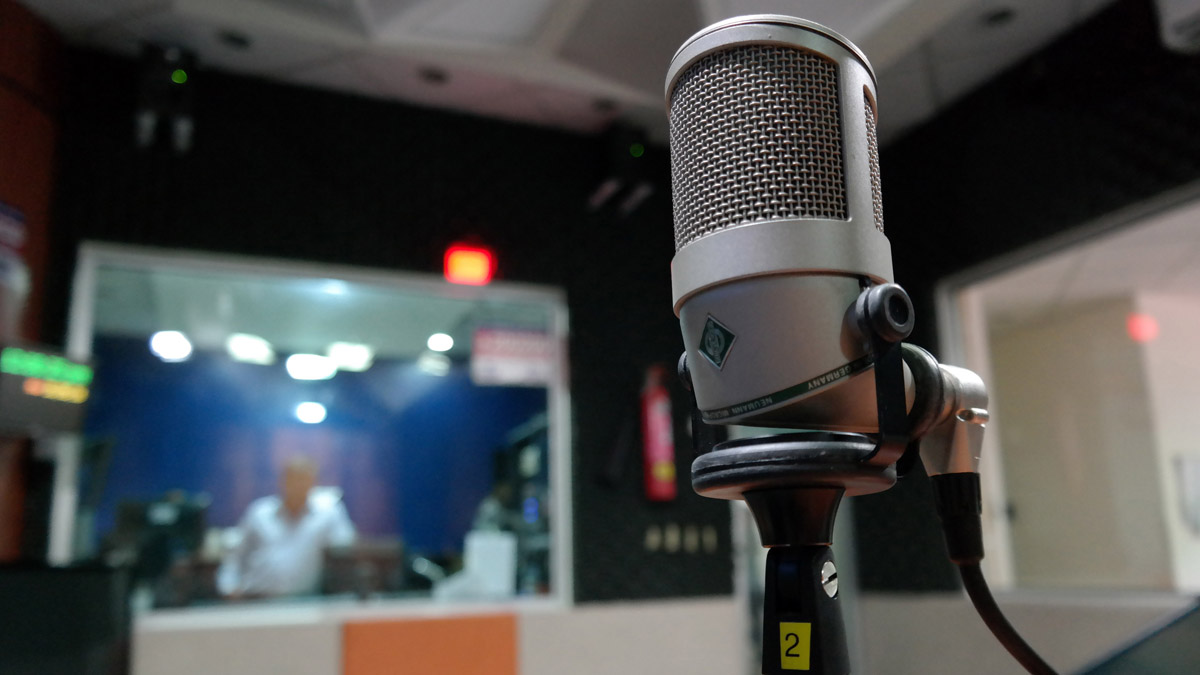
What type of mic is best for recording?
There is no single microphone that is best for recording, as different mics are best suited to different jobs. Many microphones can also play multiple roles, so while one might sound great on a snare drum, it might not do such a good job on vocals. Ultimately the best mic for recording is the one that sounds best on your particular source, regardless of the brand or type.
What is the holy grail of microphones?
There are a few mics that people think of, but I'd imagine most people will think of the AKG C12, Neumann U47, or Neumann U87 as the 'ultimate' microphone. There are many microphones that imitate these condenser mics due to their excellent sonic characteristics.
Why are good microphones so expensive?
A good microphone requires a massive degree of precision engineering, research and development, high-quality materials, and has to be meticulously put together. All of these factors are what make mics from big brands like Neumann, AKG, and other so expensive.
Can a cheap mic sound good?
It depends on the mic, but yes, a cheap mic can sound good. The SM57 has been used to capture loads of great performances over the years, and costs around the $/£100 mark. Of course, a more expensive mic will make things sound more high-definition, but ultimately the defining factor of how good your recording sound will mostly come from the performance and the room it's in.
Why do old microphones sound better?
While vintage mics sound pretty similar to their modern equivalents, there are a couple of factors that go into the hallowed sound of a classic microphone. First, modern mics tend to emphasize brightness, which is all part of the sound of modern music. Secondly, a lot of old mics were built with materials that are no longer available in commercial products today. Finally, you do have to attribute some of that classic sound to recording on tape as well.
Do mics lose quality over time?
So long as you treat your microphones well, you shouldn't find that there's any change in sound over time. Damage does happen during the course of a microphones life, but dynamic mics are pretty rugged. Condensers are slightly more delicate, and ribbon mics even more so, but taking care of your mics means they'll stay with you for a long time.
How we test
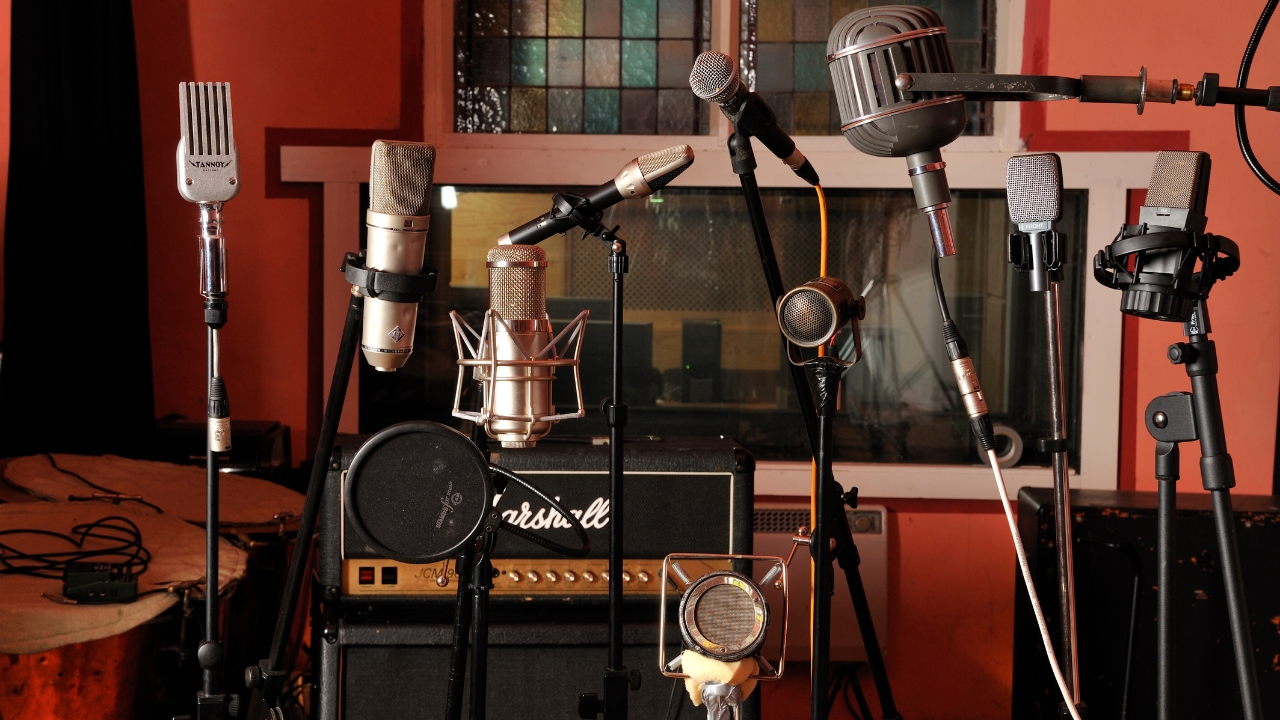
We test recording microphones in a variety of ways and with a lot of different material to test their strengths and weaknesses. Obviously if a mic is designed with a certain instrument in mind then we focus on that type of recording. It may be that a mic has been designed with a specific frequency response for vocals, for example, so we obviously won't use it to record kick drums but, where possible, will try it on similar material if appropriate.
We compare the recordings we make with those made with some of the standard reference microphones we have in our studio, being sure to have them set up in the same way and distance from the source being recorded. We will always try to be fair by comparing like with like – ribbons, condensers, dynamics and those with similar polar patterns – and models of a similar price.
That said, it's often interesting to compare a cheap mic with some vastly more expensive microphones to hear just how close they can get. You'll be surprised at how good some cheaper models are against classic and vintage microphones as, just like every other music gear category, technology has also improved in microphone design.
Some microphones, condensers in particular, are sold as good all-round studio mics, jacks of everything if you like, and if that is the case we will test them on as much material as possible explaining in our tests where they particularly excel or fall down. Finally we look at overall build quality, polar pattern responses, any software bundle options and alternatives within price categories.
Read more about how we test music making gear and services at MusicRadar.
Latest updates
Recent updates
03/04/25 - The guide has been given a top to bottom update, changing the layout to make it more useful for readers. Two new microphones have been added in the Rode M5 and AKG C414, while a new how to choose section has been curated alongside a glossary of key terms to make the guide more helpful.
Related buyer's guides
- Level up your audio with the best camera microphones
- Work the crowd with the best live vocal microphones
- Finding pod: the best podcast microphones for all budgets
- Plug and play with the best USB microphones
- Our pick of the best iPhone microphones
Get the MusicRadar Newsletter
Want all the hottest music and gear news, reviews, deals, features and more, direct to your inbox? Sign up here.

Matt is a Junior Deals Writer here at MusicRadar. He regularly tests and reviews music gear with a focus on audio interfaces, studio headphones, studio monitors, and pretty much anything else home recording-related. Matt worked in music retail for 5 years at Dawsons Music and Northwest Guitars and has written for various music sites including Guitar World, Guitar Player, Guitar.com, Ultimate Guitar, and Thomann’s t.blog. A regularly gigging guitarist with over 20 years of experience playing live and producing bands, he's currently studying Sound Engineering and Music Production at Spirit Studios in the UK.
